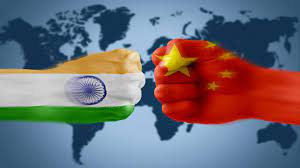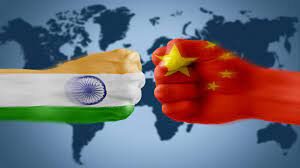Table of Contents
China’s imports are anticipated to have declined in May, despite a low base last year when a lockdown in Shanghai halted operations at the country’s largest port. At the same time, exports are projected to have fallen for the first time in three months, according to a recent Reuters poll. The poll, which surveyed 26 economists and was finalized on Monday, revealed that inbound shipments to the world’s second-largest economy were expected to have dropped by 8.0% year-on-year, following a decrease of 7.9% in April.
Export figures are also discouraging, with a forecasted shrinkage of 0.4% from the previous year, compared to a growth of 8.5% in April. These numbers reflect weak global demand for Chinese goods and align with the poor import performance, as China relies on parts and materials from abroad to assemble finished products for export. The official trade data for China will be released on Wednesday, shedding light on the actual figures.
Post-Pandemic Situation
Unfulfilled orders from last year’s COVID-19 disruptions may have contributed to the pessimistic outlook for exports. Chinese exporters have likely caught up on those orders, and the current global demand seems insufficient to sustain a recovery in outbound shipments. Moreover, China’s factory activity shrank more than expected in May, as shown by the official manufacturing purchasing managers’ Index (PMI), indicating weakening demand. However, a private sector survey released on Thursday unexpectedly revealed growth in the sector.
The May sub-indexes of China’s official PMI showed a contraction in factory output, compared to the previous expansion, and a decline in new orders, including new exports, for the second consecutive month. Although the pace of decline in South Korean shipments to China, which serves as a leading indicator of China’s imports, eased to the slowest seen in seven months (20.8% in May), it still marked the 12th straight annual loss.
China’s economy exceeded expectations in the first quarter due to robust services consumption, but factory output has lagged behind due to weak global growth. As a result, analysts are downgrading their GDP growth forecasts for China in 2024. Nomura and Barclays have both revised their projections downward. The Chinese government has set a modest GDP growth target of around 5% for this year, following the failure to achieve the 2022 goal.
Trade Deficits
Traditionally, India has imported more from China than it exports. In April 2022, India’s overall trade balance reflected a deficit of -8.37 billion USD. However, in April 2024, the trade balance improved slightly but still remained in deficit at -1.38 billion USD. The continuous and widening trade deficit is primarily due to India’s dependence on imports to meet the gap between domestic production and supply, as well as consumer preferences for various products.
India-China Relations

A 2018 report by the Standing Committee on Commerce, chaired by Naresh Gujral, highlighted several factors contributing to the impact of Chinese goods on Indian industry. The report cited insufficient implementation of existing anti-dumping laws, reliance on Chinese raw materials in sectors like pharmaceuticals, dependence on Chinese imports in India’s National Solar Mission, and Goods and Services Tax on certain products resulting in increased imports from China. Additionally, Indian smart city administrations were found to prefer Chinese bicycles over Indian ones. In response to these concerns, Prime Minister Modi took notice of the Swadeshi Jagran Manch’s (SJM) campaigns and launched or revived 220 out of 370 anti-dumping suits against Chinese items, ranging from steels to pharmaceuticals and chemicals.
The People’s Republic of China and the Republic of India established bilateral relations in 1950. While the two nations have historically maintained peaceful relations for thousands of years, the harmony in their relationship has fluctuated in modern times. The victory of the Chinese Communist Party in the Chinese Civil War in 1949, followed by the annexation of Tibet by the People’s Republic of China, has been a major point of contention. Economic cooperation has been sought between the two countries, but frequent border disputes and economic nationalism have posed challenges to their relationship.













